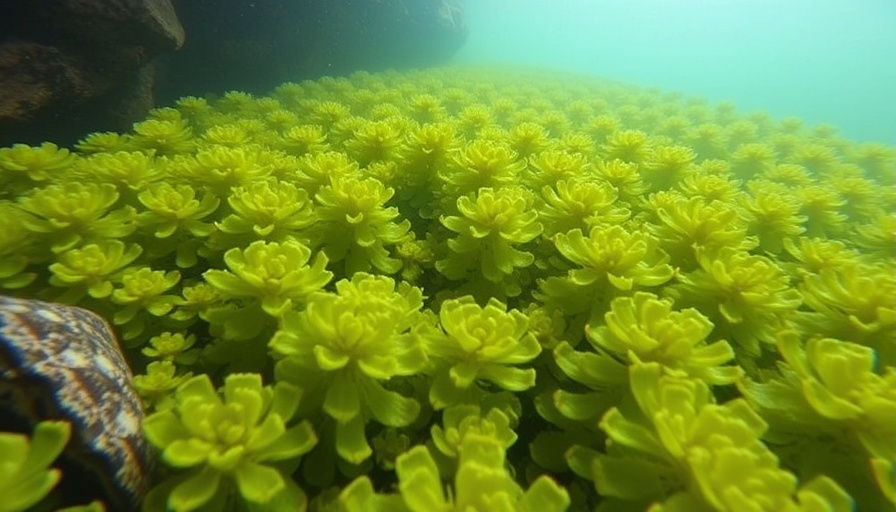
Unlocking the Power of Macroalgae in Climate Change Mitigation
As humanity grapples with the unprecedented consequences of climate change, it is becoming increasingly evident that reducing greenhouse gas emissions is not enough. Innovative strategies to remove existing CO2 from the atmosphere are essential. One promising solution lies in the cultivation of macroalgae, or seaweeds, which are touted for their remarkable carbon sequestration potential.
The Mechanism of Carbon Sequestration in Seaweed
Macroalgae play a crucial role in capturing carbon through photosynthesis, converting dissolved CO2 into organic carbon. According to research compiled by the Energy Watch Group, large seaweed farms can significantly reduce atmospheric CO2 levels. By utilizing untapped subtropical gyres, these farms not only sequester carbon but also provide marine habitats and enhance global food security, particularly for nations in the Global South.
Historical Context: Seaweeds as Carbon Sinks
Historically, blue carbon ecosystems, including mangroves and seagrasses, have received much attention for their carbon storage capabilities. However, macroalgae, which store half of all organic carbon in marine ecosystems, have been largely overlooked in both carbon accounting and policy frameworks. Studies indicate that macroalgae can sequester carbon at significant rates, making them vital players in a comprehensive climate strategy.
Diverse Perspectives: The Case for Policy Reform
Experts urge the urgent inclusion of macroalgae in global climate policies. With the potential for seaweed farming to act as a nature-based solution, scholars advocate for collaborative efforts to enhance research and investment in this field. Addressing barriers in policy and ecosystem management is imperative to unlock the full climate potential of these marine plants.
Reducing Risks: Navigating Challenges in Aftermath of Cultivation
Despite the benefits, macroalgae farming comes with risks that must be managed. Concerns include the potential for marine debris and harm to local ecosystems. Moreover, large-scale cultivation could disrupt existing habitats, leading to unintended consequences. It is crucial to establish responsible harvesting and management practices to protect marine biodiversity while leveraging the climate benefits of seaweed farming.
Actions Toward a Sustainable Future
For contractors and builders committed to sustainability, understanding the role of macroalgae in carbon sequestration opens avenues for innovative construction practices. Integrating seaweed-derived materials into building designs not only supports climate mitigation but also promotes the growth of a sustainable marine economy. Increasingly, the path to a low-carbon future may involve collaborating with industries that explore marine resources effectively.
In summary, the cultivation of macroalgae presents a viable and eco-friendly solution in the fight against climate change. From policy reform to innovative practices in sustainable construction, the potential benefits of this underappreciated solution could change the trajectory of our environmental future.
Join the movement toward sustainable practices and explore opportunities in incorporating macroalgae into your projects. By embracing this green technology, you can play a pivotal role in fostering environmental responsibility and contributing to a healthier planet.
 Add Row
Add Row  Add
Add 




Write A Comment